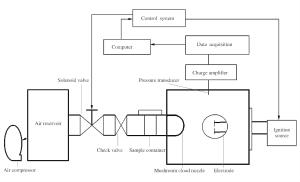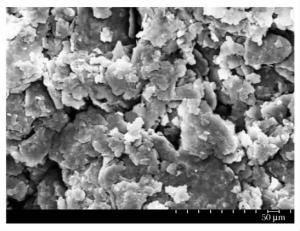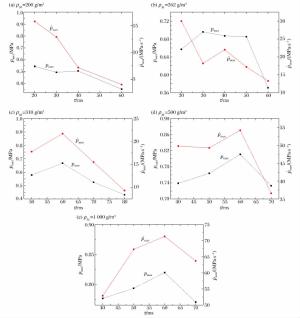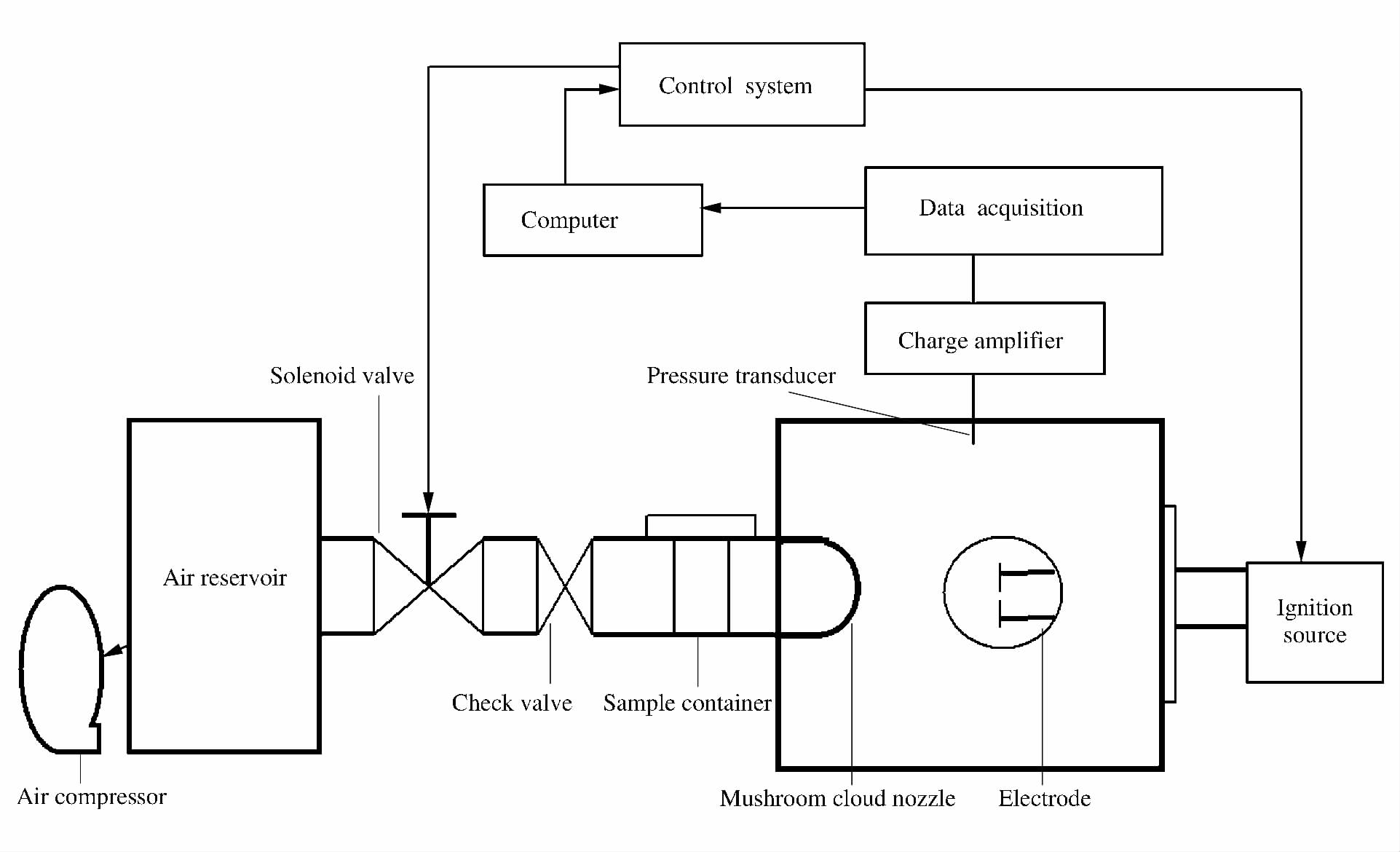| [1] |
Baum M R. Rupture of a gas pressurized cylindrical vessel: The velocity of a detached end-cap[J]. Journal of Loss Prevention in the Process Industries, 1985, 8(3): 149-161.
|
| [2] |
Eckhoff R K. Dust explosions in the process industries[R]. Great Britain: Butterworth Heinemann, 2003.
|
| [3] |
Nagy J, Verakis C. Development and control of dust explosions[M]. New York: Marcel Dekker Inc, 1985.
|
| [4] |
Kauffman C W, Srinath S R, Tezok F I, et al. Turbulence and accelerating dust flame[C]//20th Symposium(International)on Combustion. Pittsburgh PA: The Combustion Institute, 1984: 1701-1708.
|
| [5] |
Jarosinski J, Lee J H, Knystautas R, et al. Quenching distance of self-propagation dust-air flamese[C]//Proceedings of 21st Symposium (International) on Combustion. Pittsburgh PA: The Combustion Institute, 1986: 1917-1924.
|
| [6] |
王双峰, 浦以康, 贾复.一种低湍流扬尘方法的实验研究[J].工程热物理学报, 2006, 27(2): 347-350. doi: 10.3321/j.issn:0253-231X.2006.02.053Wang Shuang-feng, Pu Yi-kang, Jia Fu. Experimental investigation on a low turbulence dust dispersion method[J]. Journal of Engineering Thermophysics, 2006, 27(2): 347-350. doi: 10.3321/j.issn:0253-231X.2006.02.053
|
| [7] |
Pu Y K. Fundamental characteristics of laminar and turbulent flames in cornstarch dust-air mixture[D]. Department of Mechanical Engineering, McGill University, 1988.
|
| [8] |
Tai C S, Kauffmann C W, Sichel M, et al. Turbulent dust combustion in a jet-stirred reactor[J]. Progress in Astronautics and Aeronautics, 1988, 113: 62-68.
|
| [9] |
Pu Y K, Li Y C, Kauffman C W, et al. Determination of turbulence parameters in closed explosion vessel[J]. Progress in Astronautics and Aeronautics, 1989, 132: 107-123.
|
| [10] |
Amyotte P R, Pegg M J. Lycopodium dust explosions in a hartmann bomb: Effects of turbulence[J]. Journal of Loss Prevention in the Process Industries, 1989, 2(2): 87-94. doi: 10.1016/0950-4230(89)80004-X
|
| [11] |
李新光, 王健, 钟圣俊, 等.初始湍流对粉尘爆炸影响的实验研究[J].中国粉体技术, 2010, 16(5): 37-41.Li Xin-guang, Wang Jian, Zhong Sheng-jun, et al. Experimental investigation on influence of pre-ignition turbulence on dust explosion[J]. China Powder Science and Technology, 2010, 16(5): 37-41.
|
| [12] |
Nagy J, Verakis C H. Development and control of dust explosion[M]. UK: Marcel Dekker Inc, 1983.
|
| [13] |
Eckhoff R K. Dust explosions in the process industries[M]. US: Butterworth-Heinemann Ltd, 1991.
|
| [14] |
胡俊, 浦以康, 万士昕.粉尘等容燃烧容器内扬尘系统诱导湍流特性的实验研究[J].实验力学, 2000, 15(3): 341-348. doi: 10.3969/j.issn.1001-4888.2000.03.015Hu Jun, Pu Yi-kang, Wan Shi-xin. Experimental investigation on dispersion-induced turbulence in closed explosion vessels[J]. Journal of Experimental Mechanics, 2000, 15(3): 341-348. doi: 10.3969/j.issn.1001-4888.2000.03.015
|
| [15] |
Liu Q M, Bai C H, Li X D, et al. Coal dust/air explosions in a large-scale tube[J]. Fuel, 2010, 89: 329-335. doi: 10.1016/j.fuel.2009.07.010
|
| [16] |
尉存娟, 谭迎新, 路旭, 等.点火延迟时间对铝粉爆炸压力的影响研究[J].中北大学学报, 2009, 30(3): 257-260. doi: 10.3969/j.issn.1673-3193.2009.03.013Yu Cun-juan, Tan Ying-xin, Lu Xu, et al. Effect of the ignition delay time on the explosion pressure of aluminum dust[J]. Journal of North University of China, 2009, 30(3): 257-260. doi: 10.3969/j.issn.1673-3193.2009.03.013
|
| [17] |
袁旌杰, 伍毅, 陈瑜.点火延迟时间对粉尘最大爆炸压力测定影响的研究[J].中国安全科学学报, 2010, 20(3): 65-69. doi: 10.3969/j.issn.1003-3033.2010.03.012Yuan Jing-jie, Wu Yi, Chen Yu. Effect of ignition delay time on measurement of maximum explosion pressure of dusts[J]. China Safety Science Journal, 2010, 20(3): 65-69. doi: 10.3969/j.issn.1003-3033.2010.03.012
|
| [18] |
Zhang Q, Li W, Lin D C. Influence of nitromethane concentration on ignition energy and explosion parameters in gaseous nitromethane/air mixtures[J]. Journal of Hazardous Matericals, 2010, 185(2): 756-762.
|
| [19] |
Cashdollar K L, Zlochower I A. Explosion temperatures and pressures of metals and other elemental dust clouds[J]. Journal of Loss Prevention in the Process Industries, 2007, 20(4/5/6): 337-348.
|
| [20] |
Dufaud O, TraoréM, Perrin L, et al. Thomas. Experimental investigation and modeling of aluminum dusts explosions in the 20Lsphere[J]. Journal of Loss Prevention in the Process Industries, 2010, 23(2): 226-236. doi: 10.1016/j.jlp.2009.07.019
|







 下载:
下载:



